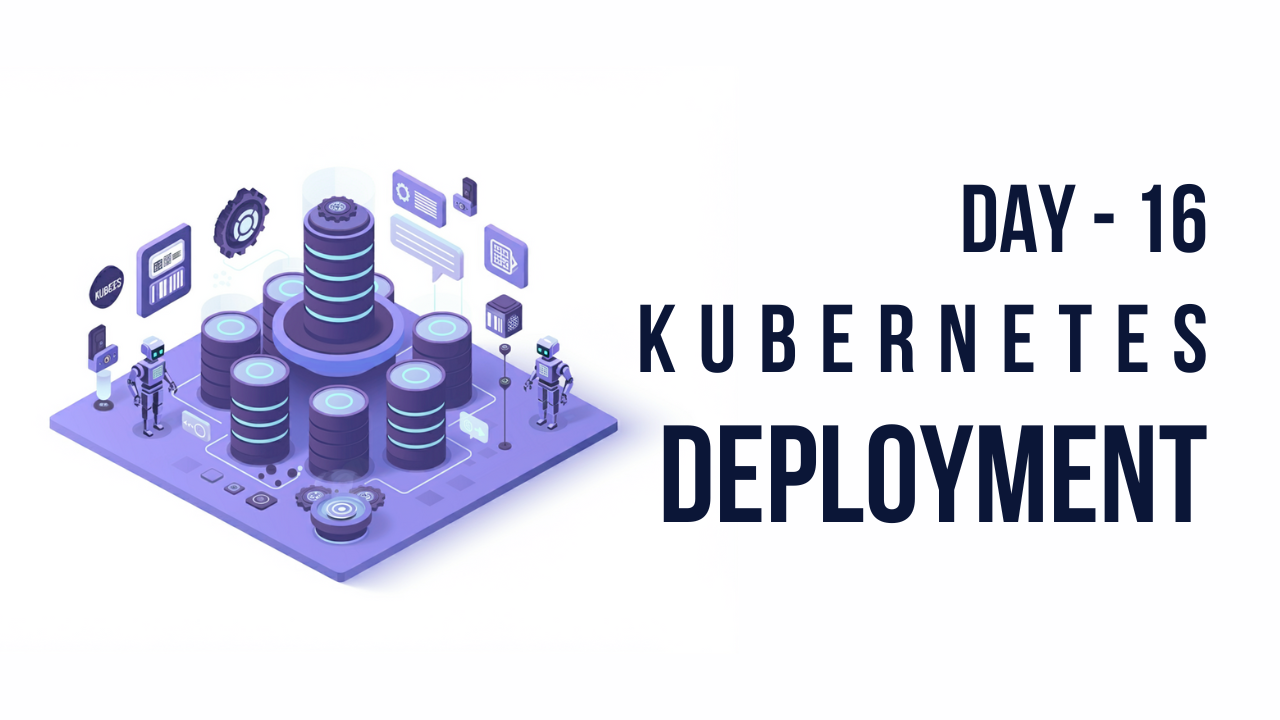-

·
Mastering Kubernetes Deployments: A Refreshing Guide for Beginners Day-16
Hey there! Imagine it’s the hottest day of summer, and you’re running the most popular lemonade stand in town. Your secret recipe has everyone lined up around the block. Life is good, right?But wait… Suddenly: Managing all of this manually would be overwhelming. That’s exactly why Kubernetes, an open-source system, exists—it’s like having a super-smart manager for your…
-

·
How to Organize Your Kubernetes Cluster with Labels and Selectors: Day-14
Imagine Your Room Full of Toys 🧸 Think of your bedroom filled with all your toys scattered everywhere. You have toy cars, dolls, building blocks, stuffed animals, and puzzles all mixed up together. When you want to play with a specific toy, it’s hard to find it in the mess. Wouldn’t it be easier if…
-

·
How to Create Kubernetes Pods: Day-13
Welcome to the Train Station of Kubernetes! Imagine you’re at a big train station where lots of trains come and go, carrying passengers to different places. This train station is magical because it organizes all the trains, makes sure they run on time, and helps them reach their destinations safely. This magical station is called…
-

·
Kubernetes Components: Scheduler, Controller, Kubelet, and Kube-proxy: Day-12
Imagine a Busy Playground Think of a big playground where there’s a lot happening: kids are playing different games, some are on swings, some are playing tag, and others are building sandcastles. To make sure everyone is happy and safe, there are helpers organizing everything. Kubernetes Components in Technical Terms Kubernetes is a powerful system…
-

·
ETCD in Kubernetes: Day-10
Understanding etcd: The Brain Behind Kubernetes In the intricate world of container orchestration, Kubernetes stands as a towering achievement of modern distributed systems. But beneath its powerful exterior lies a critical component that often goes unnoticed – ETCD. This distributed key-value store serves as the brain of every Kubernetes cluster, quietly maintaining the state that…
-

·
How to Use Free $200 DigitalOcean Credit to Set Up a Free Kubernetes Cluster: Day 08
DigitalOcean offers students an incredible opportunity to learn and experiment with cloud infrastructure using a $200 credit through the Developer Pack. Kubernetes, an open-source platform for container orchestration, allows you to automate application deployment, scaling, and management. With this guide, you’ll quickly set up a Kubernetes cluster on DigitalOcean and start exploring its potential. Step…
-

·
How to Setup AWS EKS Cluster using Terraform: Day-07
This guide will walk you through the process of setting up the necessary AWS infrastructure for your Terraform deployment, including an Ubuntu server, IAM user with appropriate permissions, and an S3 bucket for storing Terraform state files. and finally setup EKS cluster with terraform files. Prerequisites Part 1: Creating an Ubuntu Server Part 2: Creating…
-

·
How to install Minikube on Ubuntu 24.04: Day-05
Are you looking to run Kubernetes locally for development and testing? Minikube is the perfect solution, allowing you to spin up a single-node Kubernetes cluster on your Ubuntu machine. In this guide, we’ll walk through the complete installation process of Minikube on Ubuntu 24.04. Prerequisites Before we begin, ensure your system meets the following requirements:…
-

·
Kubernetes cluster architecture: Day-04
Introduction In the ever-evolving landscape of cloud-native technologies, Kubernetes has emerged as the de facto standard for container orchestration. Like a well-orchestrated symphony of shipping containers navigating vast oceans, Kubernetes manages and coordinates containerized applications with remarkable precision and efficiency. The Core Components: A Deep Dive 1. Kubernetes Master (Control Plane) At the heart of every Kubernetes cluster lies the master node, often called the control plane.…
-

·
Kubernetes Advancement with Naruto verse: Day-03
Introduction In the world of container orchestration, Kubernetes stands as the undisputed Hokage of cloud-native technologies. Let’s explore how the ninja world of Naruto perfectly parallels the evolution and concepts of Kubernetes. The Pre-Kubernetes Era: The Ninja War Before Kubernetes (K8s), managing containers was like the chaotic ninja war era – uncoordinated, complex, and challenging to maintain. Developers struggled with: In the…